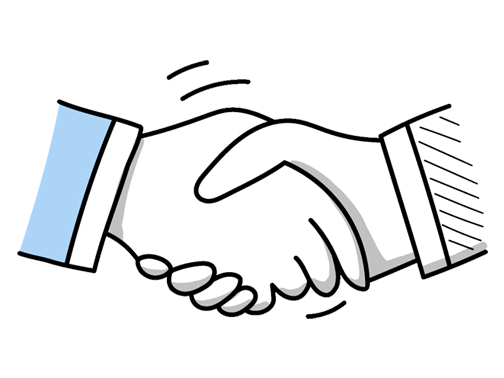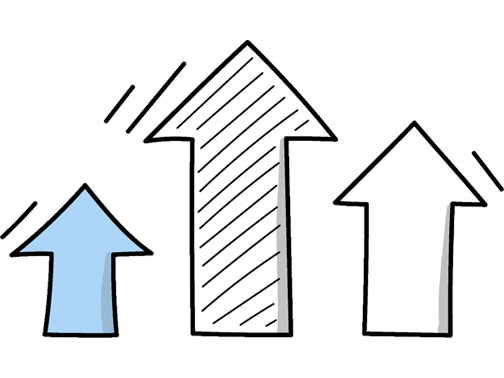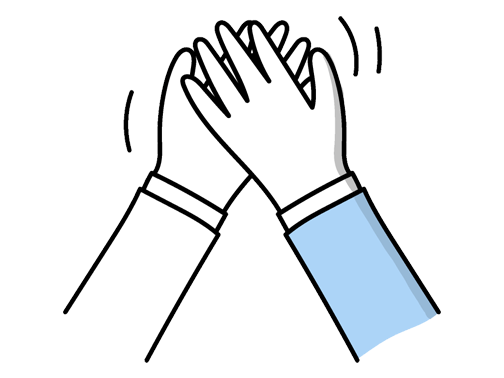Fiberglass Laminator Interview Questions (2025 Guide)
Find out common Fiberglass Laminator questions, how to answer, and tips for your next job interview
Practice Interviews Online - Identify your strengths and weakness in a realistic Fiberglass Laminator mock interview, under 10 minutes
Practice Now »Fiberglass Laminator Interview Questions
What they want to know is how you ensure quality and address problems efficiently to prevent defects from affecting the final product. You need to say that you carefully inspect the laminate for issues, identify the root cause, and apply the correct repair methods while following safety and quality standards.
Example: When inspecting fiberglass laminates, I start by carefully examining the surface for issues like air bubbles, delamination, or uneven resin distribution. If I spot a defect, I assess whether it’s a surface blemish or a deeper problem, then decide if it needs sanding, patching, or a complete redo. For example, air pockets often require slow, firm rolling to eliminate trapped air before curing. This hands-on attention helps ensure a strong, clean finish.
This interview question checks if you actively keep up with safety rules and apply them to protect yourself and others. You should say you regularly follow UK safety updates and integrate new guidelines into your laminating work while promptly addressing any hazards you notice.
Example: I make a point of regularly checking industry sites and HSE updates to stay informed on safety rules. Whenever there’s a change, I adapt my work methods and share the info with my team to keep everyone safe. For example, when new guidelines on protective gear came out last year, I made sure we all adjusted quickly, which helped prevent accidents and keep the workshop running smoothly.
Employers ask this to gauge your hands-on experience and understanding of fiberglass lamination techniques. You should describe specific projects you’ve worked on, like constructing boat hulls, and mention the materials and methods you used, such as applying resin and fiberglass mats to create strong, durable layers.
Example: In my previous role, I worked on boat hull repairs where I applied multiple layers of fiberglass, ensuring smooth finishes and strong bonding. I used polyester resin and carefully controlled curing times to avoid bubbles or weaknesses. One challenge was working in tight spaces, but by adjusting my technique and using smaller brushes, I maintained quality and durability throughout the process. It was rewarding to see the finished products withstand tough conditions.
Questions like this assess your ability to manage time and resources efficiently under pressure, ensuring the project stays on track. You need to explain how you evaluate each task’s urgency and impact, communicate with your team or supervisor about priorities or delays, and adapt your plan as new issues arise.
Example: When faced with several issues, I first quickly evaluate which ones could affect safety or delay the project most. I then communicate with the team and supervisor to align priorities and delegate where possible. Staying calm helps me adjust if new problems arise. For example, once a resin mix was off during lamination—I paused to fix that first before moving on, ensuring quality without halting other tasks unnecessarily.
What they want to know is how you ensure smooth communication to keep the team aligned and productive. You need to say that you provide regular updates during team meetings, promptly inform everyone about changes, and encourage team feedback to address any concerns.
Example: I make it a point to keep everyone updated through regular chats or quick check-ins, so no one misses key details as the project moves along. If there are changes, I share them promptly and make sure to clarify any questions. I also encourage team members to share their thoughts or concerns, as that helps us stay on track and adapt smoothly together. For example, during a recent job, this approach helped us avoid delays and maintain quality.
Questions like this assess your teamwork and communication skills, which are crucial for maintaining safety and quality in fiberglass laminating. You need to explain how you stay calm and respectful, work with others to find practical solutions, and communicate clearly to prevent mistakes.
Example: When disagreements come up, I focus on staying calm and listening carefully to everyone’s perspective. I find it helps to discuss the issue openly and work together to find a straightforward fix that keeps the job moving smoothly. Clear communication is key—I make sure we’re all on the same page to avoid any confusion. For example, on a previous job, talking through a mix-up on materials helped us adjust quickly without any delays.
Employers ask this question to see how you handle difficulties and whether you can find practical solutions on the job. You need to describe a specific challenge you faced as a fiberglass laminator and explain the clear steps you took to resolve it successfully.
Example: In my previous role, managing tight deadlines while ensuring high-quality laminations was challenging. To tackle this, I focused on improving my efficiency without rushing the process, often double-checking my work to avoid mistakes. For example, when a last-minute order came in, I organized my tasks carefully and communicated clearly with the team to meet the deadline without compromising standards. This balance helped maintain both quality and productivity.
Hiring managers ask this question to ensure you understand how to protect yourself from the hazards of fiberglass lamination, such as skin irritation and chemical exposure. You need to say you use gloves, protective clothing, masks, and eye protection to avoid contact with resin and fibers, and that you always follow workplace safety protocols to stay safe.
Example: When working with fiberglass laminates, I always wear gloves to protect my hands from resin and glass fibers, and a mask to avoid inhaling any dust or fumes. Safety glasses are essential to shield my eyes, and long sleeves help prevent skin irritation. Following these precautions is key not only for comfort but also to maintain a safe working environment, which benefits everyone on site.
What they want to understand is your knowledge of different lamination techniques and when to use each. You need to say that hand lay-up involves manually placing fiberglass and resin for precise control, while spray-up uses a spray gun for faster application but less detail.
Example: Certainly. Hand lay-up involves manually placing fiberglass sheets and then applying resin with a roller or brush, allowing precise control—ideal for complex shapes or small batches. Spray-up uses a spray gun to mix and apply chopped fibers and resin together, speeding up production but with less control over fiber alignment. For example, I’ve used hand lay-up on detailed parts, while spray-up suits larger, simpler panels.
Employers ask this to see if you learn from experience and improve your work process. You need to say you review what went wrong, communicate with your team, and adjust techniques to avoid repeating mistakes.
Example: I always take time to review what went well and what didn’t after each project. If any issues arise, I note them and think through how they could be avoided next time, whether by adjusting the process or checking materials more carefully. For example, if a laminate doesn’t cure properly, I’d check the temperature controls before starting the next job to prevent it from happening again.
Hiring managers ask this to ensure you understand the importance of safety and proper procedures when working with hazardous materials. You need to explain that you follow all handling and disposal guidelines, always use protective equipment like gloves and masks, and communicate any hazards immediately to maintain a safe work environment.
Example: When working with hazardous materials, I always follow the correct handling and disposal guidelines to keep everyone safe. I make sure to wear the right protective gear and encourage my team to do the same. If I spot any potential risks, I communicate them immediately to prevent accidents. For example, at my last job, I flagged a spill quickly, which helped avoid any serious issues.
Interviewers ask this question to see if you understand the key steps in producing a strong, defect-free laminate that meets quality standards. You need to explain how you prepare materials and workspace to avoid contamination, monitor thickness and prevent air bubbles during application, and inspect the finished product to ensure it is free of defects and properly cured.
Example: To ensure consistent quality, I start by thoroughly preparing the workspace and materials, making sure everything is clean and ready. While laminating, I carefully monitor thickness and use techniques to eliminate air bubbles, like slow, even rolling. Afterward, I inspect the laminate closely for any imperfections and follow safety protocols to maintain a high standard. For example, in my previous role, this approach reduced rework significantly.
Interviewers ask this question to see how you identify and solve problems under pressure, ensuring quality and safety in the lamination process. You need to clearly explain the problem you faced, the steps you took to fix it, and the positive outcome that followed.
Example: During a lamination run, I noticed uneven resin distribution causing weak spots. I paused the line, checked the rollers and resin mix, then adjusted the speed and mixture ratio. After these tweaks, the finish improved noticeably. This hands-on approach helped avoid costly rework and kept production on schedule.
What they want to know is how you handle problems on the job with creative solutions that improve results. You need to briefly describe the lamination issue you faced, explain the unique method you used to fix it, and share how your approach made the product or process better.
Example: Sure. Once, I faced an issue where the resin wasn’t curing evenly, causing weak spots. Instead of following the usual method, I adjusted the mixing ratios and introduced a slower hardener to control the reaction time better. This subtle change ensured a stronger, more consistent laminate. It was rewarding to see the final product meet all quality standards without extra costs or delays.
This question helps the interviewer see that you recognize safety risks and take responsibility to keep the workplace safe. You need to clearly state the hazard you spotted, explain the quick action you took to fix it, and show how it prevented accidents.
Example: In a previous role, I noticed some resin spills near the workbench that made the floor slippery. I quickly cleaned the area and placed warning signs to alert my colleagues. This small step helped prevent potential slips and ensured everyone stayed aware of the risk, creating a safer environment for the team.
Questions like this assess your ability to communicate, collaborate, and solve problems within a team setting, which are crucial in fiberglass laminating projects. You need to briefly describe a specific example where you clearly explained tasks, worked together to meet deadlines, and resolved any issues that arose to ensure smooth project completion.
Example: In a previous role, I worked closely with a team to meet tight deadlines on a large fiberglass project. We regularly shared updates and divided tasks based on each person's strengths. When a delay occurred due to material shortages, we quickly regrouped, adjusted schedules, and supported each other to stay on track. This open communication and flexibility helped us deliver a high-quality product on time.
Hiring managers ask this question to ensure you understand the health risks associated with fiberglass and prioritize safety. You need to say that you always wear gloves, masks, and protective clothing, work in well-ventilated areas, and handle and dispose of materials carefully to protect yourself and maintain a safe workspace.
Example: When working with fiberglass, I always make sure to wear the right protective gear, like gloves and a mask, to avoid irritation. I keep the workspace well-ventilated to minimise dust and fumes, often using extraction fans. I also clean tools and surfaces regularly and carefully manage waste, ensuring scraps and dust are safely disposed of to keep the area tidy and prevent any hazards.
This interview question is designed to assess your understanding of the entire fiberglass laminating process and your attention to detail. You need to explain the steps clearly, from surface preparation and laying the fiberglass, to applying resin, removing air bubbles, and curing, showing you know how to ensure a strong, smooth finish.
Example: Sure. First, I prepare the mold, ensuring it’s clean and smooth. Then, I cut the fiberglass mat to size, mix the resin carefully, and apply it evenly over the mold. I lay the fiberglass on top, working out any air bubbles as I go. Once it cures, I trim and finish the edges to the right shape. For example, when making boat parts, this ensures strength and a smooth finish.
Hiring managers ask this question to assess your understanding of the core materials and tools needed for effective fiberglass lamination and your ability to handle them properly. You need to explain the roles of materials like chopped strand mat, woven roving, and fiberglass cloth, and mention essential tools such as rollers, brushes, and cutting tools, while also showing you know how to prepare and mix resin and catalyst accurately.
Example: In fiberglass lamination, we typically work with different types like woven roving, chopped strand mat, and fiberglass cloth, each serving a specific purpose. Essential tools include brushes for applying resin, rollers to remove air bubbles, and cutting tools. Properly preparing the material—like cutting to size and ensuring it’s clean—helps achieve a strong, smooth finish. Handling everything carefully ensures the layers bond well and the final product is durable.
Employers ask this question to see if you can ensure smooth teamwork and avoid mistakes by making sure everyone knows their tasks clearly. You should say that you hold a team meeting to explain roles, ask for feedback to confirm understanding, and regularly check progress to keep everyone aligned.
Example: I make a point of explaining each person’s role clearly from the start, then check in to make sure everyone’s on the same page by inviting questions or feedback. I also keep an eye on how things are progressing, stepping in to clarify or adjust tasks as needed. For example, when we worked on the last big lay-up, this approach helped us finish efficiently without confusion.
Interviewers ask this question to see if you can effectively share your skills and ensure quality work through mentoring. You need to explain how you created clear training steps, used hands-on demonstrations to teach safety and quality, and monitored progress by giving feedback and adjusting your methods.
Example: Yes, I’ve guided new laminators by first outlining clear steps that focus on safety and quality from day one. I use hands-on demonstrations paired with regular check-ins to track their progress and make sure they feel supported. For example, when a junior struggled with resin application, I adjusted my explanations and provided extra practice until they gained confidence and consistency.
What they want to know is if you have the proper skills and knowledge to perform the job safely and effectively. You need to mention any certifications like OSHA safety training or specialized courses in fiberglass techniques that show you are qualified and prepared.
Example: I’ve completed hands-on training focused on fiberglass techniques, including safety protocols and resin handling, which really helped me understand the materials and processes involved. I’ve also worked alongside experienced laminators, picking up best practices on layering and finishing. This practical experience, combined with basic health and safety certifications, has prepared me to maintain quality and efficiency in any laminating project.
Questions like this assess your ability to work collaboratively and maintain quality and safety on the job. You need to say that you actively listen, give clear instructions, and provide updates to keep everyone informed throughout the lamination process.
Example: I keep communication clear and straightforward by checking in regularly with my team, especially during key stages of the lamination. If I notice anything unusual, I mention it right away to prevent issues. For example, during a previous project, I flagged an inconsistency in resin application early, which helped us avoid defects and stay on schedule. Staying open and attentive really helps everything run smoothly.
Questions like this assess your attention to detail and knowledge of quality control to ensure strong, defect-free laminates. You need to explain that you thoroughly prepare surfaces by cleaning and degreasing, apply resin evenly with the right tools, and control environmental factors like temperature and humidity to prevent air bubbles and defects.
Example: To avoid air bubbles, I make sure the materials are well-prepped and dry before starting. When applying resin, I work steadily with a roller to push out any trapped air, often overlapping strokes to ensure even coverage. I also keep an eye on temperature and humidity, since they can affect curing and cause defects. Once, adjusting environmental conditions helped me reduce bubbling significantly on a tricky job.
This question helps the interviewer gauge your familiarity and skill level with the specific tasks involved in fiberglass laminating. You need to clearly state your total years of experience working as a Fiberglass Laminator, highlighting any relevant roles or projects to show your hands-on expertise.
Example: I’ve spent several years working with fiberglass laminating, honing my skills in both hand lay-up and spray-up techniques. In my previous role, I was responsible for creating durable, high-quality components, often meeting tight deadlines. This experience taught me attention to detail and working efficiently under pressure, which I believe are essential for this role.
Ace your next Fiberglass Laminator interview with even more questions and answers
Common Interview Questions To Expect
The interviewer is looking for insight into your long-term aspirations and how they align with the company's goals. Be honest, specific, and show ambition.
Example: My career goal is to become a senior fiberglass laminator within the next five years. I want to continue honing my skills in fiberglass fabrication and eventually lead a team of laminators. I believe that by achieving this goal, I can contribute to the growth and success of the company.
The interviewer is looking for honesty, professionalism, and a valid reason for leaving the previous job. Possible answers could include seeking career growth, better opportunities, relocation, or a change in industry.
Example: I left my last job because I was looking for new opportunities to grow in my career. I felt like I had reached a plateau in my previous role and wanted to challenge myself in a new environment. I'm excited about the potential to learn and develop my skills further in this industry.
The interviewer is looking for examples of how you cope with stress and challenging situations in the workplace. Be sure to provide specific examples and demonstrate your ability to stay calm and focused under pressure.
Example: I handle pressure by staying organized and prioritizing tasks effectively. For example, when deadlines are approaching, I make a detailed plan and break down the work into manageable steps. This helps me stay focused and deliver high-quality results even under tight timelines.
The interviewer is looking for examples of how you prioritize tasks, manage your time effectively, and handle stress in a fast-paced environment. Be honest and provide specific examples from your past experiences.
Example: Yes, I am able to handle multiple responsibilities at once. In my previous role as a fiberglass laminator, I was responsible for preparing materials, operating machinery, and ensuring quality control all at the same time. I prioritize tasks based on deadlines and importance, allowing me to effectively manage my time and handle any stress that may arise.
The interviewer is looking for examples of how you have successfully collaborated with others, communicated effectively, and contributed to achieving team goals. Be prepared to discuss specific instances where you worked well with others.
Example: Sure! In my previous role as a Fiberglass Laminator, I worked closely with a team to complete projects on time and to a high standard. We communicated effectively to ensure everyone knew their roles and responsibilities, and we supported each other to achieve our goals. Overall, my experience working in a team has taught me the importance of collaboration and teamwork in achieving success.
Company Research Tips
The company's official website is a goldmine of information. Look for details about the company's history, mission, vision, and values. Pay special attention to any information related to their fiberglass laminating processes, products, or services. This will give you a good understanding of what the company does and how your role as a Fiberglass Laminator fits into their operations. Also, check out their news or blog section to stay updated with their latest developments and achievements.
Tip: Don't just skim through the website. Take notes and try to understand the company's culture, work ethics, and business model. This will help you tailor your responses during the interview.
Social media platforms like LinkedIn, Facebook, and Twitter can provide valuable insights about the company. You can find information about their work culture, employee experiences, and recent updates. LinkedIn can be particularly useful to understand the professional background of the people you might be working with, or the interviewer. This can help you connect better during the interview.
Tip: Follow the company on these platforms to stay updated. Engage with their posts to show your interest.
Understanding the industry trends can give you an edge during the interview. Look for news articles, reports, and blogs about the fiberglass industry in the UK. This will help you understand the market dynamics, challenges, and opportunities in the industry. You can discuss these during your interview to show that you are well-informed and proactive.
Tip: Use reliable sources for your research. Websites like BBC News, The Guardian, and industry-specific portals can provide accurate and up-to-date information.
Researching about the company's competitors can give you a broader perspective of the industry. Understand what these companies are doing differently and how the company you are interviewing with stands out. This can help you understand the company's unique selling proposition and how they position themselves in the market.
Tip: Use tools like Google and LinkedIn for your research. Look for news articles or press releases that compare these companies.
What to wear to an Fiberglass Laminator interview
- Clean, neat casual attire
- Comfortable trousers or jeans
- Solid color t-shirt or polo
- Closed-toe shoes, preferably safety shoes
- Avoid excessive jewelry
- Neatly groomed facial hair
- Light makeup for women
- Avoid strong perfumes or colognes
- Bring safety glasses if you have them





